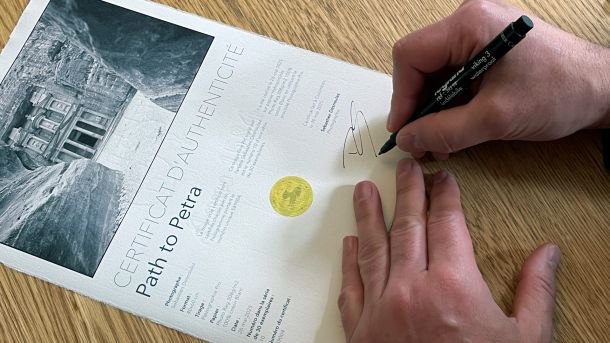From Darkness to Light: The Symbolism of Contrast in Fine Art Photography

Bonifacio sailors’ cemetery – Photo : © Sebastien Desnoulez
The interplay of light and shadow is one of the most powerful visual languages in fine art photography. Far beyond aesthetics, it expresses intention, emotion, and perspective. This bold artistic choice, embraced by many photographers, defines their creative vision. Discover how chiaroscuro becomes a true signature of the artist.
A Powerful and Instinctive Visual Language
Fine art photography often relies on subtle visual oppositions: light and shadow, blur and sharpness, calm and tension. Among these dualities, light contrast remains one of the most striking tools in the visual language. More than a visual effect, it carries emotional and symbolic weight. When consciously used as an artistic choice, it can shape an entire body of work.
The contrast between darkness and light has been present throughout art history. In photography, it asserted itself from the very beginning: black and white photography, by nature, structures images through chiaroscuro. This visual tension draws the eye, dramatizes, questions, and invites deeper interpretation. It can suggest what’s hidden, evoke mystery, or trigger introspection.
Whether applied instinctively or with method, contrast illuminates the composition, sculpts form, and guides the viewer’s eye. Beyond its aesthetic function, it becomes a true narrative device.
Photographers Who Use Contrast as a Signature
Several artists have made chiaroscuro and contrast their signature style. Mario Giacomelli, for instance, explored the clash between harsh light and deep black in his landscape and portrait series. His extreme prints, often pushed to maximum density, gave his images an almost mystical feel.
Sarah Moon, on the other hand, uses blur and shadow to soften contours, suggest more than reveal, and create a dreamlike world where contrasts are gentle, poetic, and almost ephemeral.
In Anders Petersen’s work, contrasts are raw and gritty. His black and white images capture the fringe of society with rough intensity—often nocturnal scenes, harsh lighting, emphasized skin, expression, and gaze.
Sebastien Desnoulez: Contrast as a Guiding Principle
Photographer represented by the gallery Une image pour rêver, Sebastien Desnoulez places contrast at the heart of his work. His images explore visual and symbolic oppositions: mineral and plant, sharp and blurred, motion and stillness, matter and light.
In his architectural series as well as in his more abstract compositions, shadow does not conceal—it reveals. It enhances volumes, plays with filled and empty spaces, and creates a graphic rhythm that gives the image its full meaning.
Desnoulez does not seek frozen perfection, but a fragile balance between opposing visual forces. What interests him is the tipping point where image becomes language, where emotion emerges from tension.
A Contemporary Take on Visual Emotion
In an age where digital photography allows extreme control over exposure and post-processing, choosing contrast is no longer a technical limitation—it’s a deliberate choice. It becomes a statement, a unique way of seeing the world.
In interior spaces, a fine art photograph built on contrast instantly catches the eye. It creates atmosphere, visual vibration. Perhaps this is its true power: to stir emotion without saying a word.
The Gallery: Une image pour rêver
Une image pour rêver is an online gallery dedicated to limited-edition fine art photography. It brings together artists with strong, distinctive visions, including Sebastien Desnoulez, whose work with contrast is a defining trait. All artworks are custom printed on Hahnemühle paper and framed by hand with care, in a sustainable and responsible approach.



